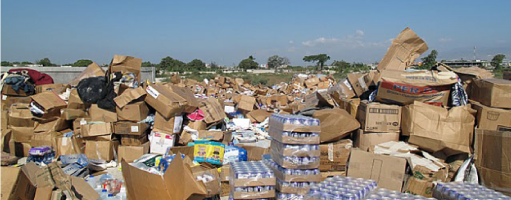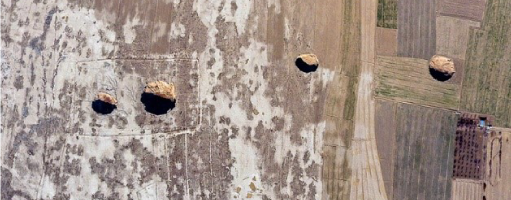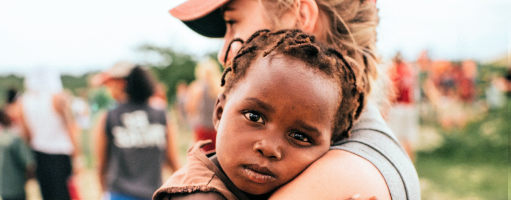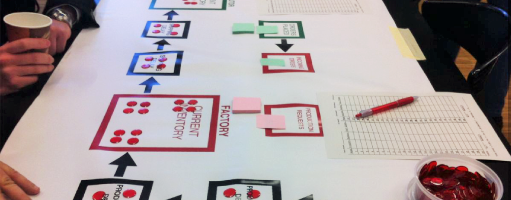Objective
To study human behavior and decision-making during humanitarian operations to gain a better understanding of current humanitarian operations management and help develop new approaches and practical tools to improve the impact of humanitarian aid.
Our research is tailored to real and current issues that are raised through our academic network or our students and alumni, most of whom are active humanitarian professionals in developing countries. Our doctoral students are actively engaged in research from the start and are involved in teaching, where they ensure that effective tools are applied by humanitarian professionals. We teach our students how to use models and other operations and management tools to solve problems effectively and have an immediate and positive impact.
Current research is focused on addressing the central global issues of our time in specific settings using mathematical modeling to capture complex dynamics and provide information for decision-makers.
Selected Current Projects
|
_____________________________ We develop a model to map the influx of large amounts of material to disaster sites to study the factors that influence a successful response. The model tests and compares policies to determine their effectiveness in distributing high priority material and assisting disaster victims. Author: Raquel Buzogany Keywords: material convergence, humanitarian operations, system dynamics, disaster relief Material convergence poses significant challenges during disasters. The inflow of supplies and donations has both positive effects – making much-needed material available – and negative ones – jamming the supply chain. While other studies have investigated supply chains overwhelmed by unsolicited donations, ours is the first to map the feedback processes influencing its overall dynamics and to offer a comprehensive analysis on how different policies affect the system. We propose ten policies, categorized according to the characteristics of the material flows. A first set of policies deal with the quantity of material entering the system. These include policies that impose an acceptance threshold for non-priority materials, constrain storage space, increase humanitarian organizations’ budget for material acquisition, and pre-position materials. A second set of policies regulate the proportion between high-priority and non-priority materials; these include policies that increase donor education, increase coordination among humanitarian organizations, and withhold non-priority materials at the warehouse. A third set of policies regulate the speed of the material flows and include policies that increase humanitarian organizations' human resources, increase the number of points of distribution, and improve capacity allocation decisions. Our analyses show that the unintended consequences of some of the policies trump their intended rationality, leading to undesirable outcomes. Our research sheds light on ways to address the challenges presented by material convergence during disasters. |
|---|
|
_____________________________ Recently, the alarming rise of "sinkholes" in agricultural areas in Iran highlights the excessive use of groundwater. This research focuses on causes of the problem from a socio-economic and political perspective to develop a model that can support policy decision making. Author: Alireza Akhavan Keywords: water scarcity, system dynamics, economic policy In the early 1980s, the Iranian government introduced energy subsidies to stimulate a stagnant economy. The subsidies made accessing water affordable, prompting a boost in agricultural activities, which, due to the attractive market and available land, caused a marked increase in pistachio production in the Rafsanjan region. After years of excessive groundwater extraction, the region is now facing a severe water scarcity problem. Besides, a dramatic increase in production cost also leads farmers to abandon their orchards and leave the region, which for many years has accounted for about half of Iran’s pistachio production. Meanwhile, the United States, previously the biggest importer of pistachios, has become a strong competitor to Iran in the pistachio market, particularly in China. In this way, Iran is losing its current market position due to the USA’s cost-effective production. Unemployment, emigration, regional economy depression, and other aspects of this troublesome situation prompt the stakeholders to look for a solution.
Investigating this complex dilemma needs a comprehensive and systematic study to consider all aspects of the situation. System Dynamics is used as a practical tool and to provide a theoretical perspective that captures the whole picture of this socioeconomic system. The primary purpose of this research is to propose a model that represents the essence of the situation known as the tragedy of the commons. |
|---|
|
_____________________________ ’Rubbish island’ is a blight in the archipelago that threatens the environment and the economy. This research studies how policy, organizational, and social factors have interacted to provoke the problem and provides a model to test potential solutions. Authors: Florian Kapmeier, Paulo Gonçalves Keywords: Small island developing states, Maldives, tourism, municipal waste management, sustainability, system dynamics, quantitative analysis Small Island Developing States (SIDS) face tension between economic growth and environmental impact. To fuel economic growth, they rely on tourism, typically building resorts, increasing bed capacity and developing transport infrastructure. However, tourism negatively affects the environment because it generates significant solid waste, the management of which is a recurrent, pressing, and persistent issue. We assess this tension from a limits to growth perspective, focusing on policies that address growth directly as a means to reduce environmental impact. We test several policies which reduce the volume of tourists through increasing prices, limiting access, and setting obstacles to practices that harm the environment. To shed insight on this general issue, we develop a system dynamics model using data from the Maldives.
The effort to build tourism infrastructure quickly, without building the underlying social service infrastructure to support it (e.g., sewage, trash collection, disposal sites) can exacerbate the environmental damage and limit economic growth from tourism revenue. |
|---|
|
_____________________________ What happens when emergency responders compete to see who can reach most persons in need the fastest? Author: Paulo Gonçalves Keywords: Common pool resources, system dynamics, competition, laboratory experiments, behavioral operations Humanitarian Organizations (HOs) often compete for scarce resources during emergency response, causing negative and undesirable effects, such as inadequate coordination, effort duplication and reduced operational performance. This research considers the competition for scarce resources from a common pool resources (CPRs) perspective. Through the development of a laboratory experiment, we analyze participants’ behavior when they consider beneficiary suffering and HOs operational costs. We find that participants build up excessive capacity, speeding up the response, but also intensifying competition among HOs and reducing the effectiveness of the response. We conclude with a discussion of practical implications and opportunities for future research.
|
|---|
|
_____________________________ We review Beer Game experiments to see what happens when buyers have more information about supply. Authors: Paulo Gonçalves, Mohammad Moshtari Keywords: Bullwhip Effect, Information Sharing, Ordering Dynamics, Behavioral Causes, Information Visibility, Beer Game, Experiments Previous research on the bullwhip effect shows that information visibility – Point-Of-Sale (POS) data or supply chain partner inventory data – can reduce the amplification of orders in a supply chain. This study compiles and analyzes the data from two experiments with the Beer Game (Croson and Donohue 2003; 2006) to gain insight on the specific mechanisms that decrease order amplification. By structuring the data as a panel and using a fixed effects estimation model, we find that additional supply chain level information leads subjects to react less aggressively to changes in their own inventory than in the original studies: subjects are slow to eliminate inventory gaps or they acquire safety stocks when faced with unexpected shortages. Furthermore, our analysis shows that such effects are more pronounced for upstream subjects. Our findings provide insight into how supply chain members use additional information to place orders. |
|---|
|
_____________________________ The military are often first to arrive at the scene of a humanitarian crisis. Coordination with non-military organizations is crucial to respond effectively. Author: Aruna Apte, Paulo Gonçalves, Keenan Yoho Keywords: Humanitarian logistics, Civil-military co-operation, Capabilities and competencies Purpose – Both the military and non-military organizations (NMO) bring assets, skills, and capabilities to a humanitarian crisis, however, their capabilities and competencies are very diverse. Identification of the specific competencies and capabilities that are core to these types of organizations can enable better planning by both military and NMOs, allowing them to achieve greater effectiveness and efficiency in the humanitarian response. The purpose of this paper is to explore the core capabilities of the military and NMOs engaged in humanitarian operations. Design/methodology/approach – The work builds on existing literature on the core competency of the corporation. The authors extend the concept of the ability to identify, cultivate, and exploit the core capabilities in the private sector to the organizations that want to respond efficiently and effectively to disasters. The authors develop a core competencies test for such organizations. Findings – The research identifies the competencies and capabilities that are core to the US military and NMOs for humanitarian assistance and disaster relief. By identifying such abilities the authors establish a vein of research for exploring the role of such organizations to facilitate greater understanding among academics, policy makers, and decision makers in public administration, public health, and international aid.
Originality/value – Existing literature in humanitarian logistics does not adequately address identification of those competencies and capabilities that are core to the military organizations and NMOs and are most needed during the operational life cycle of a humanitarian crisis. In addition to identifying them, the authors compare the core capabilities of the military and NMO. |
|---|
|
_____________________________ This is a meta-study that re-evaluates factors that influence collaboration among humanitarian organizations during a disaster response. Author: Mohammad Moshtari, Paulo Gonçalves Keywords: Collaboration, Coordination, Humanitarian organization, Humanitarian operation, Disaster relief Factors Influencing Inter-Organizational Collaboration within a Disaster Relief Context Despite the need for inter-organizational collaboration within a humanitarian setting in recent years, there are a considerable number of challenges to efficient collaboration among humanitarian organizations (HOs) operating after natural disasters. Up to this point, scholars have explored the inhibitors and drivers of collaboration in a number of papers and reports that have primarily served to provide a list of factors that influence collaboration within a disaster relief context. Since each list is partial or limited, we conducted this meta-study to advance and frame knowledge on collaboration among HOs, to trace the gap of the literature and to initiate further studies on this topic. Our systematic literature review proposes a categorization of the factors influencing collaboration among HOs. It contains three clusters of factors: (1) contextual factors; (2) inter-organizational factors; and (3) inner-organizational factors. In the last section, we elaborate on opportunities for future research on collaboration among HOs. The full text of paper is accessible via this link: http://rdcu.be/nlGo |
|---|









